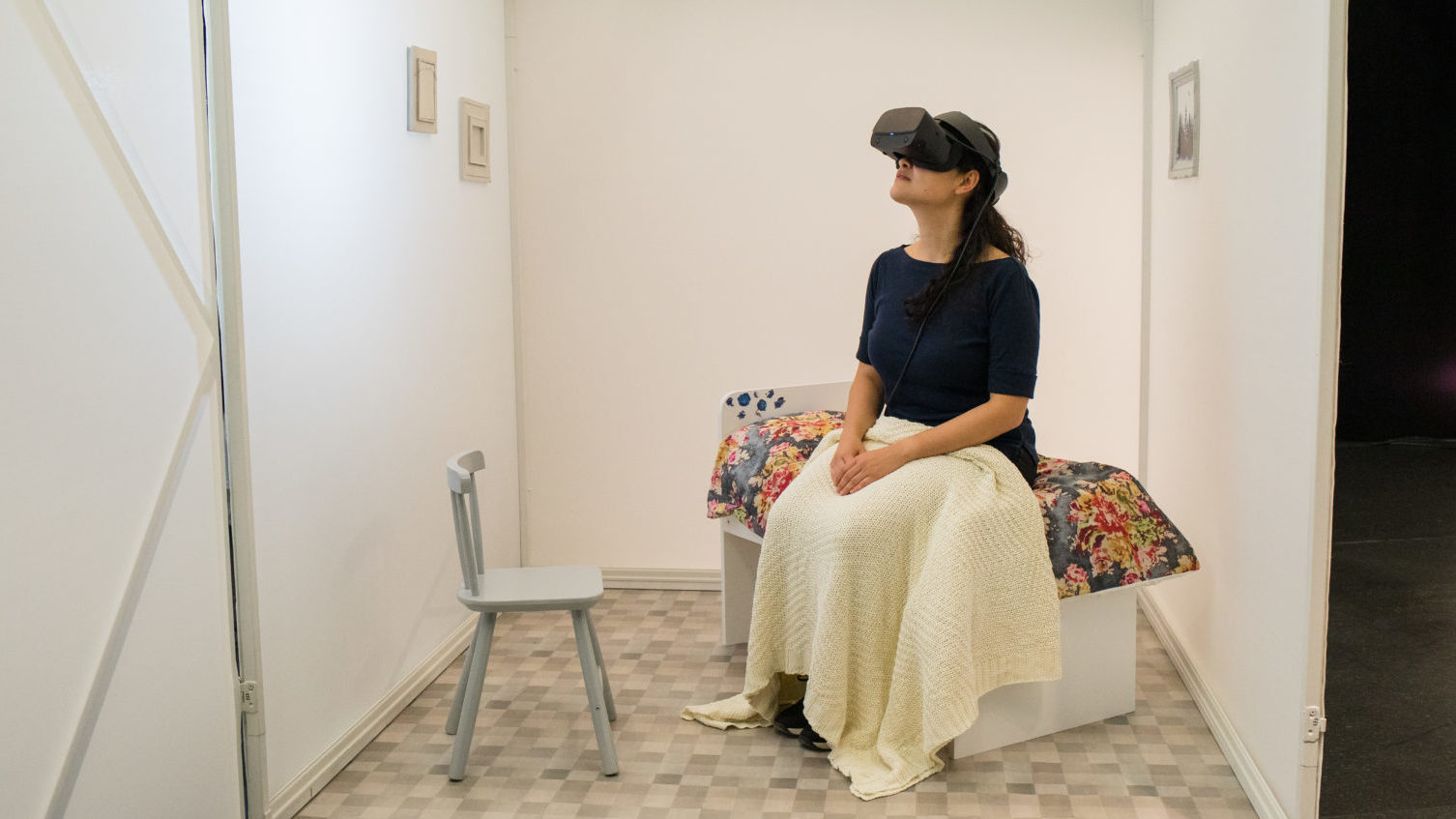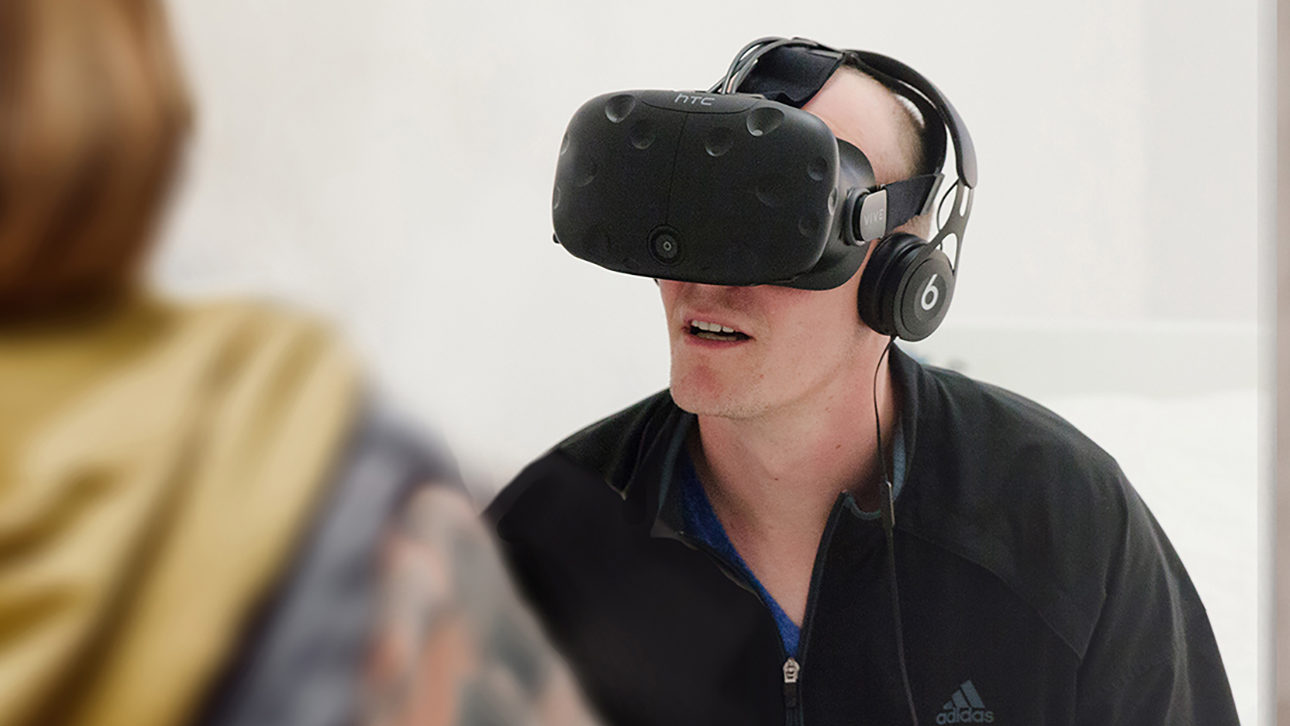Using Virtual Reality and Multimedia to showcase Unique Perspectives: VIOLETTE and Aalaapi
January 19, 2022
Canada has long been at the forefront of using technology to evolve the way people experience storytelling on stage. Since the 1990s, Canadian theatre has been experimenting with virtual reality (VR) and multimedia, creating immersive, site-specific performances. Brenda Laurel’s Placeholder, way back in 1993, paved the way, and was one of the first productions to use VR featuring three-dimensional graphics, character animation and integrated sounds and voices, allowing two participants to explore the Canadian Rockies with a local mythology narrative. In 2010, The Electric Company Theatre thrilled audiences with Tear the Curtain!, a multimedia feast for the senses drawing on The Stanley Theatre’s past history as both a cinema and a live theatre, slipping seamlessly through aspects of both mediums.

Chris Knight, writing for the National Post, explained how he had become enamoured with virtual reality’s ability to create an “empathy machine” (in the words of the late, great Roger Ebert). Just a few of the notable recent Canadian productions that make effective use of VR and multimedia are Draw Me Close, by Soulpepper, which creates a world in which you experience a boy and his mother’s poignant relationship throughout the years, The Book of Distance, a VR story by Randall Okita which tells the story of the playwright’s Japanese grandfather, who was incarcerated in an internment camp during the Second World War, and two other productions from Quebec that are featured at this year’s PuSh Festival: Aalaapi and VIOLETTE.

Aalaapi takes place in Nunavik, in an environment where the radio dominates the interior landscape, and tundra dominates the exterior. In order for the audience to be transported into the lives of the two women protagonists, the multimedia background is both sonic and visual, and the result is an intimate look into contemporary Inuit experiences. Collectif Aalaapi’s Laurence Dauphinais explains how integral the multimedia is to the show. “I believe that the multimedia aspect of the piece is what glues the sound documentary and the live performance together.” In 2018, Dauphinais and Marie-Laurence Rancourt gathered a group of Inuit and non-Inuit youth for the creation of a singular multidisciplinary piece where the spectator finds themself traveling north of the 55th parallel. The hybrid project involved the creation of a radio documentary and then the creation of a play.
“The sound documentary gives so much space to the imagination,” says Dauphinais. “The audience actively needs to visualize what is not shown to them. At the same time, the two performers on stage, as well as the video projections, serve as a simultaneous complement to the sound. They anchor the experience, complexify and densify the audience’s perceptions. It gives the audience full perspective on elements of living in the North in the past through the archival materials as well as in the present through the sound documentary and the two performers”.
Andrea Moneta, writes in Conversation, The University of Nottingham’s blog, “when virtual reality is used interactively it opens up whole new worlds to be explored. The traditional relationship between space-actor-spectator becomes a space-spectactor relationship. The audience is no longer in a passive role. Dramatic action is substituted by a real action, and how it plays out is shaped by the spectators”.
VIOLETTE relates the story of the eponymous character through a combination of live one-on-one interaction and experiences through a VR headset. Brought to life by the Montreal company Joe Jack et John, the cast is neurodiverse, and the story reflects aspects of their lived reality. Catherine Bourgeois from Joe Jack et John explains how VR helps tell this particular story. “The incentive behind the use of VR in VIOLETTE was brought by the desire to create an intimate encounter, as well as the subject matter – a subject that we whisper in the ear of a friend and not that we project loudly on stage.”

The immersive experience highlights the isolation and vulnerability of the character of Violette, but the fact that every aspect of the production, from dialogue to staging, was informed by the real-life experiences of many of the neurodiverse actors makes the piece a document of self-expression and reclaiming one’s narrative. “Virtual reality is the medium of empathy”, says Bourgeois, “it allows the user to come into direct contact with another reality”.
Montreal is a hub of VR creation in Canada, but Bourgeois says, “much of the local content is touristic—serving to reinforce privilege instead of disrupting it. There’s a fine line between being a tourist and having a genuine encounter. Moreover, the field of new technologies is strongly dominated by white men, and particularly that of virtual reality for which its development is mainly due to the pornography and gaming industries. It is therefore also out of a desire to balance the sources of the narratives that I wanted to explore the medium by putting forward a feminine and feminist discourse, to diversify the dominant aesthetics”.
